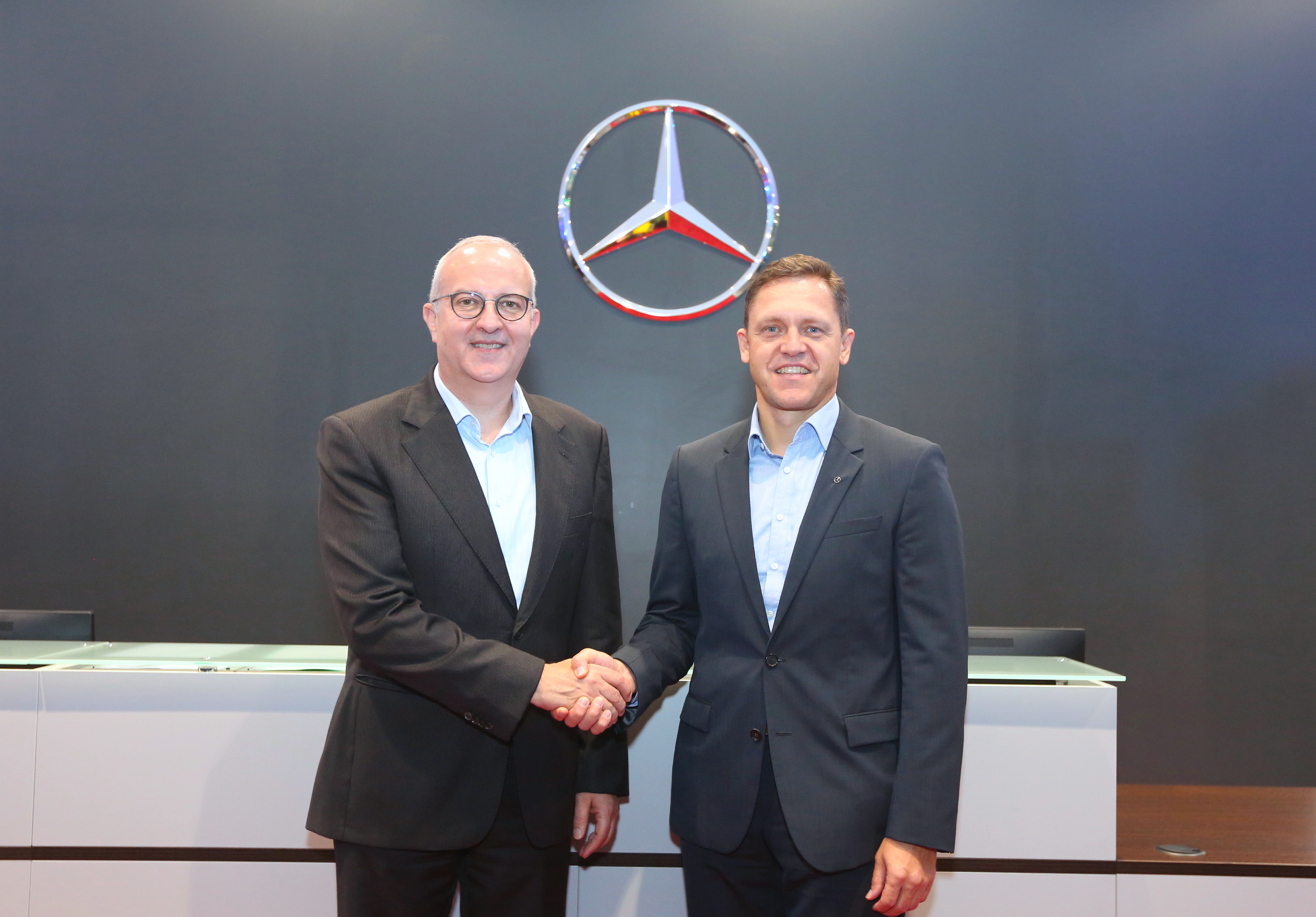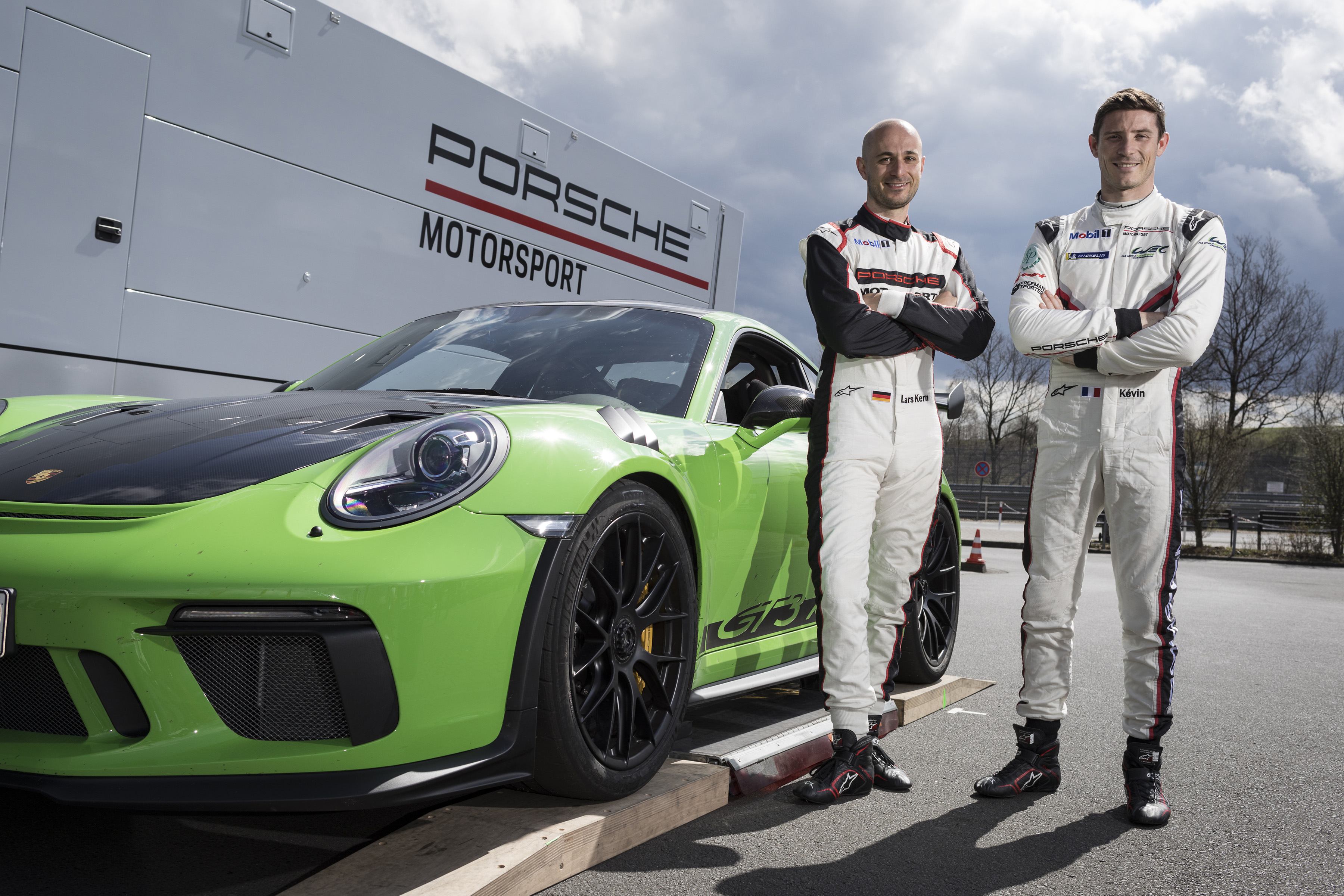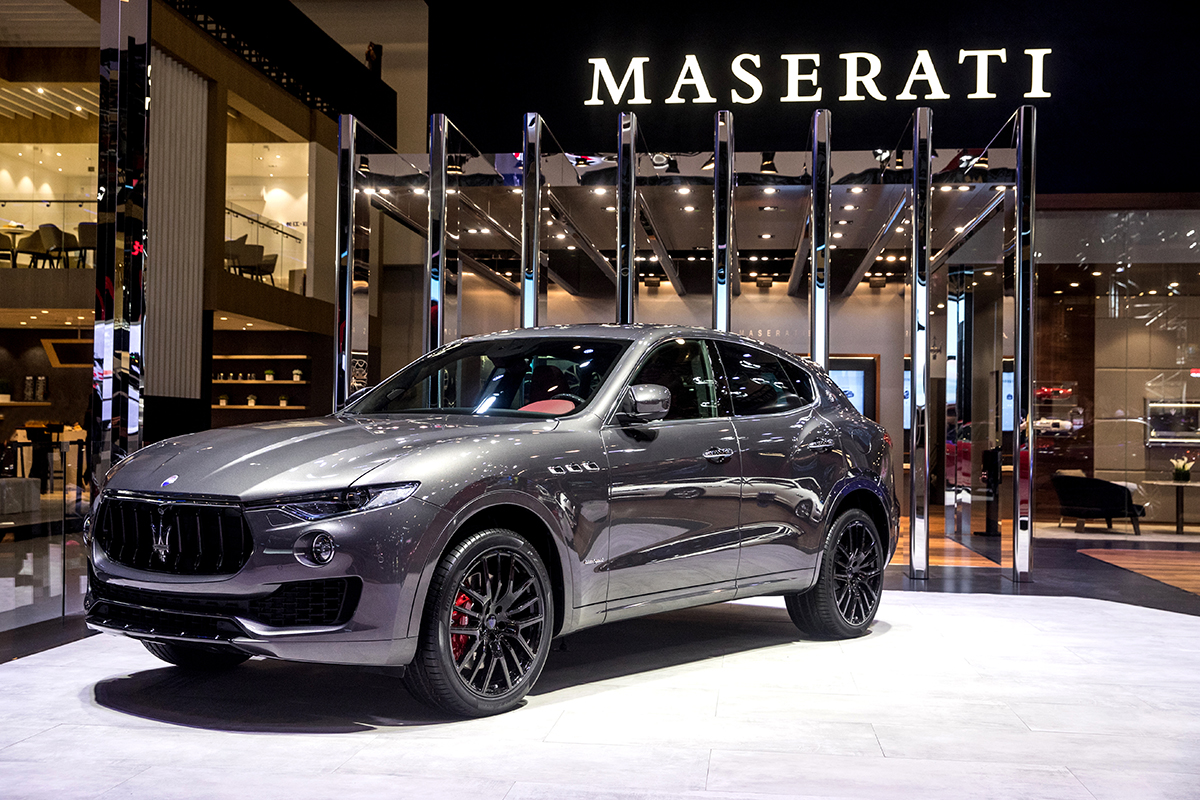A fleet of 50 Volkswagen Polo 1.6’s will adorn the SOCAR logo and serve the car-sharing programme in the Klang Valley. SOCAR which launched in Kuala Lumpur just three months ago is continuing to reshape the way Malaysians think about mobility by leading the ‘multiflex movement’.
Key to SOCAR’s success is fast expansion which provides increased availability and convenience for their members. Another important element is to complement varying lifestyles and bring joy to the drivers on the platform. “The beauty of the car-sharing model is that as a member, you have several types of cars at your fingertips serving your different needs from a leisurely cruise out of the city to a trunk heavy trip to Ikea,” says Chief Executive Officer of SOCAR Malaysia, Leon Foong.
Signing Volkswagen as one of their preferred partners is just the beginning. “The Volkswagen Polo was a natural choice for SOCAR’s fleet expansion,” adds Foong, “because it is the perfect city car, offering an assuredly safe, yet fun quality drive. It is also one of the world’s most widely produced car models.” He also says that the current demographic of SOCAR users in Malaysia are in their mid-30s, who want to try new car models or are households that need to use a second or third car from time to time.
“We are pleased to collaborate with SOCAR. Through this partnership, we are able to offer the members of the public easy access to Volkswagen cars and have them enjoy its German engineered capabilities. The Polo is perfect for city driving, though it may be small in stature it offers a dynamic drive without compromising on safety and comfort,” says Erik Winter, Managing Director of Volkswagen Passenger Cars Malaysia (VPCM).
The first batch of 21 Volkswagen Polo cars have been delivered with the remaining 29 due by mid-May. The Polo 1.6 hatchback comes equipped with a 1.6-litre 105PS petrol injection 16-Valve Multi Point Injection (MPI) engine and a 6-speed automatic transmission with Tiptronic, the Polo 1.6 comes with a maximum torque of 153Nm available at a low 3800rpm with fuel consumption at 6.3L per 100km.
SOCAR app is available for download from the App Store and Google Play Store. The Volkswagen Polo for the month of May is priced starting from RM13.90 per hour which is inclusive of petrol and comprehensive insurance.
For more information, visit www.socar.my
Mercedes-Benz Malaysia together with authorised dealer, Hap Seng Star Sdn Bhd, recently launched the Mercedes-Benz Hap Seng Star Puchong South Autohaus. To-date, Hap Seng has invested a total of RM250 million in expanding its customer touchpoints nationwide, with an investment of RM6 million for the Hap Seng Star Puchong South Autohaus alone.

Part of a highly successful on-going partnership between principal and authorised dealer partner, Hap Seng Star Puchong South Autohaus is strategically located next to the Damansara-Puchong Highway (LDP – Puchong Barat Toll Plaza), providing easy access to customers residing in and around Puchong, USJ and Putrajaya.
Speaking at the official launch, Mercedes-Benz Malaysia President and CEO, Dr Claus Weidner, (above, right) said, “We are constantly looking to expand our dealer network, both in terms of coverage and to ensure that we are in the most advantageous locations to better serve our customers. It gives us great pleasure to congratulate Hap Seng Star on the launch of Mercedes-Benz Hap Seng Star Puchong South Autohaus and wish the team all the success in both sales and after sales. We will continue enhancing our customer touchpoints nationwide while investing in developing key areas including talent, technology, production and services, as we remain focused on providing our customers with the Best Products and the Best Customer Experience.”
With a built-up area of 21,577 sq ft, the Mercedes-Benz Hap Seng Star Puchong South Autohaus conforms to the Mercedes-Benz Presentation System II (MPS II) Autohaus concept, the global autohaus benchmark of customer experience, complete with the latest Mercedes-Benz Corporate Identity (CI).
“With the launch of this Hap Seng Star Puchong South Autohaus, we are proud to announce our 10th authorised Mercedes-Benz dealership in Malaysia. While this is a significant milestone in our history as a passionate dealer of Mercedes-Benz vehicles, we continue to reaffirm our commitment to deliver the highest standards of customer service to those who are part of the Hap Seng Star customer family,” said Hap Seng Consolidated Berhad, Group Chief Operating Officer and Hap Seng Star Sdn Bhd, Chief Executive, Harald Behrend (above, 4th from left).
More on HSS Puchong South…
Hap Seng Star Puchong South Autohaus has a total display capacity of eight Mercedes-Benz vehicles; and although an interim facility, the Autohaus is a full-fledged 3S centre equipped with 12 work bays, capable of servicing up to approximately 500 vehicles a month, providing general and specialised repair solutions.
To provide greater customer care and convenience, the 27 member team at Hap Seng Star Puchong South Autohaus offers a complete one-stop solution in sales, financial and after sales services. This includes tailored service when intending to purchase a Mercedes-Benz, personalised one-on-one interaction with a Service Advisor on necessary vehicle maintenance and repair, and financial services from Mercedes-Benz Services Malaysia, thus completing the customer’s journey in purchasing and owning a prized Mercedes-Benz vehicle.
All technicians at the Authohaus are Mercedes-Benz certified and able to provide exceptional repair works with state-of-the art specialised Mercedes-Benz equipment and tools. The new Autohaus also offers customers specialised maintenance and 24 hour roadside assistance.
Customers can also opt for Service Differentiation – an exclusive range of personalised services tailored to customers’ individual needs that offers flexibility and convenience which includes premium express service, door-to-door service or merely drop and go their Mercedes-Benz vehicle at the autohaus.
Placing greater emphasis on customer comfort and individuality, the Mercedes-Benz Hap Seng Star Puchong South Autohaus is equipped with a private Star Lounge and Mercedes-Benz lifestyle products are available for sale to all fans of the brand.
Currently, Hap Seng Star operates in Jalan Sultan Ismail, Kinrara, Jalan Ipoh, Balakong, Bukit Tinggi, Iskandar Johor and the latest in Puchong South. In East Malaysia, Hap Seng Star is present in Kuching, Miri and Kota Kinabalu.
The Hap Seng Star Puchong South Autohaus brings the total number of Mercedes-Benz Malaysia dedicated nationwide dealerships to 34 Autohauses, all delivering the Best Products and the Best Customer Experience throughout customers’ entire journey. This further fortifies the German marque’s position as the largest and leading premium automotive dealer network in the country.
The Mercedes-Benz Hap Seng Star Puchong South Autohaus is located at Lot 14225, KM3.8, Lebuhraya Damansara-Puchong, 47100, Puchong. For more info, call +603 – 8051 5616.
Yup, you read that right. I killed two of my bikes getting to Phuket Bike Week 2018. But first a bit of history. Any biker worth his or her leathers knows about Phuket Bike Week or PBW for short. It’s like a rite of passage when it comes to biking; every biker needs to do this ride at least once, because just like how Sturgis is for Harley-Davidson owners, PBW is hallowed-ground for all bikers.
I remember some years ago, I’d already decided to ride with a group of friends to PBW, but a day before the intended departure, my (then) bike developed a hiccup, which could not be cured in time. Instead of missing the event, I actually drove to PBW alone, in a clapped-out Proton Wira sedan 1.5 auto. Well at least it made it there and back, can’t say the same this time sadly…
It doesn’t take much convincing for me to swing a leg over a bike and go for a ride, so needless to say I was thrilled when the invite from Petronas arrived. In an effort to promote its new Sprinta motorcycle engine oil to a more regional market, Petronas decided to launch its new Sprinta with Ultraflex at Phuket Bike Week 2018!
I’m going to now sum up now very quickly what happened to yours truly during this ride, because it’s too painful to talk too much about it. Having flagged-off at Petronas TPM in Sg.Besi, with the first overnight stop planned for Hatyai, my Kawasaki Voyager XII (below) busted its coolant hose near Tg.Malim. Pulling into TM R&R, I assessed the damage and this time, duct-tape, cable-ties and super-glue weren’t gonna fix it.
I gingerly turned back and rode at 80kmh directly to my usual bike shop, left the bike there, hopped into a Grabcar, headed home, repacked, jumped onto my Suzuki Katana 750 and headed for the border, a full 2hrs behind the convoy. Amazingly, I managed to catch-up with them at the Bukit Kayu Hitam border, and the rest of the participants who’d already heard that I’d turned back at Tg.Malim thought they were seeing a ghost. A few actually poked me to see if I was real or not…
The next day my old Suzuki was going really well for a bike more than 30 years old, right up till Krabi where stopped at the traffic light, I noticed smoke coming from the engine; not a good sign. The bike had sprung an oil leak from its cylinder-head. A busted top-gasket would see a rather unceremonious end to my ride as she was loaded into one of the accompanying back-up vans, and I’d become part of the crew henceforth.
But we made it to Phuket Bike Week at the end of the day, where I was simply blown-away by what Petronas had achieved insofar as branding at the show was concerned. The entire main-stage area (above) looked like Petronas Town, and even the area just after the main entrance was set with a Petronas pavilion, replete with a mega-sized bottle of new Sprinta Ultraflex.
Let’s put it this way, it was nearly impossible for anyone to take a photo without at least some Petronas branding in the background. That’s how good the branding and awareness at PBW was. The actual launch coverage can be seen here.
I’d rather not talk about the journey back from PBW 2018, it wasn’t as pleasant an experience as riding, since I had to sit in a van the entire way back, but at least the company was good, my beloved bike was with me the whole way, we got home safe and that’s what matters. So what prompts bikers to flock to PBW? I saw bikers from all walks of life there, some had even ridden kapchais from KL to PBW and back.
Well, there’s no explanation for it, none whatsoever. I can’t tell you why I’ll likely try again in 2019, despite the distance to and fro and the inherent hazards along the way. It’s something you have to experience for yourself to truly understand. The atmosphere, the camaraderie, and sights and sounds. There are many bike weeks throughout the year, but there’s only one Phuket Bike Week. Once you finally ride there, you’l understand. Roll-on PBW 2019, I’ll be ready. – Chris Wee.
VIDEOS…
PBW Walk-around:
Girls of PBW:
More Girls of PBW:
Petronas participants roll-out:
Songkran Festival @ PBW 2018:
Petronas @ PBW 2018 Photo Gallery…
The Porsche 911 GT3 RS set another benchmark for road-approved sports cars at the Nürburgring-Nordschleife circuit in Germany: Porsche works race driver Kévin Estre set a lap time in 6:56.4 minutes with the 520hp GT3 RS. The Frenchman’s lap time was a whopping 24 seconds faster than the best time achieved with the previous GT3 RS model.
Porsche development driver Lars Kern was sharing driving duties with Estre. Following the 918 Spyder and the 911 GT2 RS, the new GT3 RS is the third production Porsche sports car with a notarised lap time of less than seven minutes on the world’s most demanding race track, known as the ‘Green Hell’. As is customary for record drives, the time was measured around the 20.6-kilometre lap. Here’s the in-car footage of this feat…
Frank Steffen Walliser, Vice President Motorsport and GT Cars, commented; “No other Porsche model gets as close to racing as the new GT3 RS. Many innovative ideas from top-level motorsport were transferred; for example, from the 911 GT3 R. This is what our philosophy for GT models is about: Highest technology must be fascinating but tangible. In this regard there is no harder test for our ideas than the Nordschleife.”
Here’s a look at the GT3 RS in action from the outside at the Nurburgring Nordschleife recently…
Andreas Preuninger, Director GT Model Line, added; “All four lap times of both drivers were below seven minutes and only tenths of a second apart. This proves not only the outstanding power of the GT3 RS, but also its extraordinary driveability at the limit. A perfectly composed overall system allows for highly dynamic performance even with a relatively modest engine power. For a driver, each of the car’s thousands of parts have to feel like one – that’s an unbeatable strength of the GT3 RS. And what especially delights me is how much fun Lars and Kévin (below) had when driving that car.”
29-year old Estre (below) began the record lap at 11:40 am in ideal conditions, with 14 degree Celsius ambient and 18 degree Celsius track temperature. “This lap was a sensational experience for me”, he revealed afterwards. “Through the fast corners and on the brakes in particular, the GT3 RS is unbelievably close to our racing car GT3 R. This is also thanks to the new generation of tyres for road going sports cars. I like the engine of the GT3 RS a lot. Up to 9,000 revs per minute from a six-cylinder engine just feels fantastic. The sound is a dream and the torque is massive.”

Since 2016 Kévin Estre belongs to the squad of Porsche works drivers. He competes with the Porsche 911 RSR in the FIA World Endurance Championship (WEC) that includes the Le Mans 24-Hours. In the ADAC GT Masters he races the 911 GT3 R.
The 911 GT3 RS with motorsport-bred chassis and 383kW (520hp), four-litre, naturally aspirated engine had its world premiere at the Geneva Motor Show in early March this year. The high-performance sports car accelerates from 0 to 100 km/h in 3.2 seconds, reaching a top speed of 312 km/h.
Maserati introduces its 2018 range with three significantly restyled models at the Auto China 2018 Show in Beijing and proudly showcases its GranLusso and GranSport trim strategy. The two distinctive trims represent the proposition of every Maserati which resonates with the philosophy of GranTurismo, the ultimate combination of sportiness and luxury.
A celebration of GranLusso and GranSport
Maserati has always pursued luxury and sportiness to the fullest and continues to put the customer at the centre accommodating individual needs with exclusive models, designed to meet each one’s unique personality and taste.
Maserati has unveiled a brand-new Personalization Area at Auto China 2018 to showcase its rich array of configurations for exterior and interior design. This area also displays a fleet of MY18 Maserati models in the highly customized GranLusso and GranSport trims.
The Levante GranSport (below) showcased at the lounge fully embodies the racing heritage of every Maserati. It is immediately recognizable for its front grille, skid plates and roof rails in Piano Black, for the red brake callipers and the 20” Nereo wheels. 12-way power sport leather seats, power-adjustable Sport steering wheel, elongated gearshift paddles, carbon trims and Soft Close Doors are blended to create an exciting, sport-oriented interior.
The Quattroporte GranLusso redefines the concept of luxury. The elegantly restyled exterior has adopted a more imposing, Alfieri-shaped front grille, 20” Mercurio rims and black-painted brake callipers. Exclusive Ermenegildo Zegna Silk interiors with open-pore Radica wood trim and wood-finished leather steering wheel are combined with additional comfort equipment such as power foot pedals, power rear and rear side sunblinds, four-zone automatic climate control and heated rear passenger seats.
The Ghibli (above) is another Maserati highlight in Beijing. The premium sports sedan that perfectly combines class topping performance and elegance. On show there is a 350hp Ghibli GranLusso and a 430hp Ghibli S Q4 GranSport, both equipped with the mighty 3.0 litre Twin Turbo V6 petrol engine.
 “Luxury brands have always been pioneers in automobile personalization and Maserati continues to focus on personalization for enhancing our customer experience”, said Alberto Cavaggioni, Managing Director of Maserati China.
“Luxury brands have always been pioneers in automobile personalization and Maserati continues to focus on personalization for enhancing our customer experience”, said Alberto Cavaggioni, Managing Director of Maserati China.
“China has a growing number of ‘connoisseurs’ seeking to express their personalities and tastes through exclusive cars. Faced with increasing demands for more personalized options, Maserati stands out for its unique luxury and sports heritage, thanks to which it is capable to offer premium and exclusive options that genuinely satisfy the most discerning customers.”
© Copyright – Piston.my 2024 Trademarks belong to their respective owners. All rights reserved